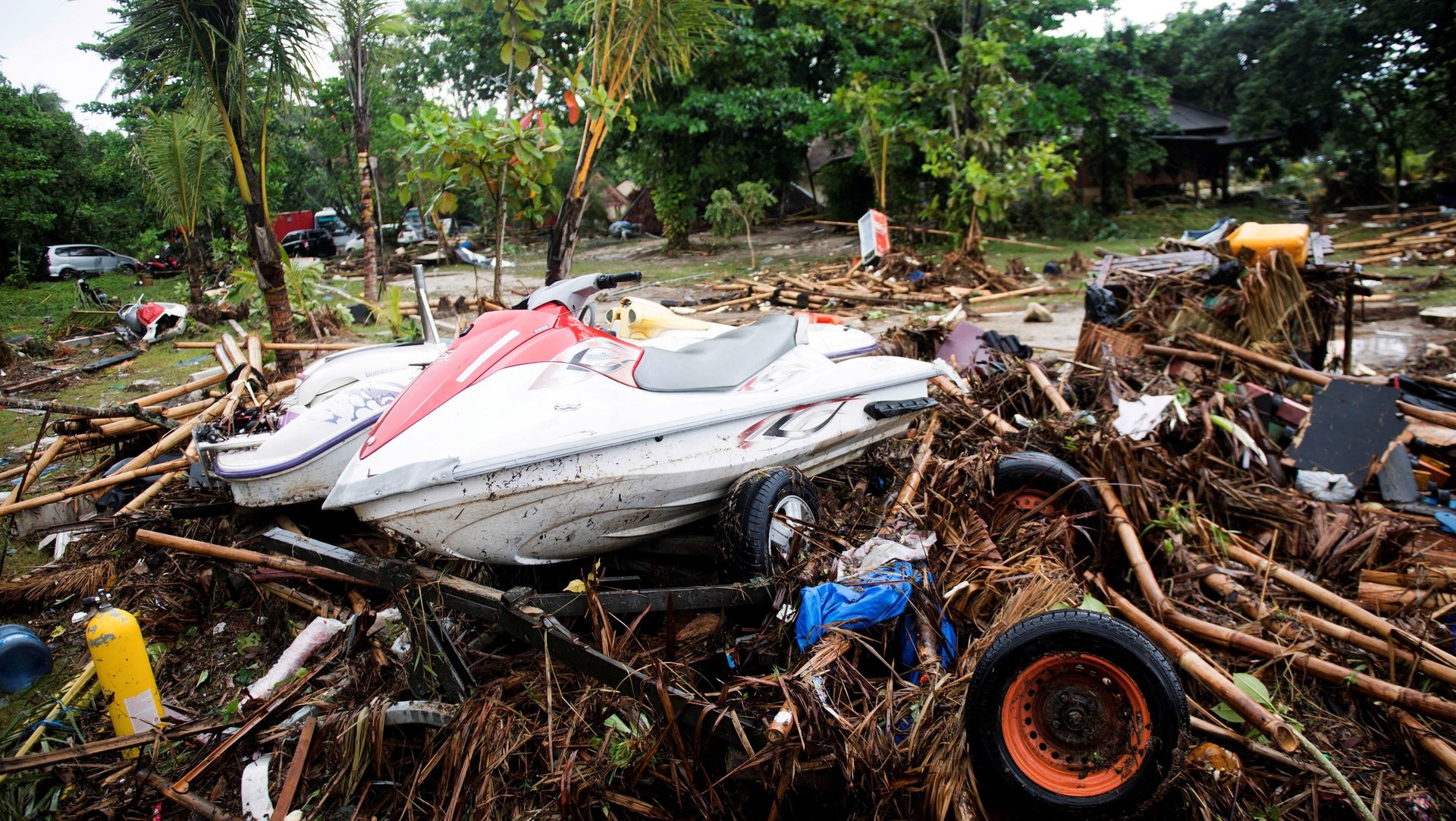Watch the Indonesian tsunami strike in the middle of a pop concert
A tsunami struck coastal towns near the Sunda Strait in Indonesia yesterday, killing at least 222 people and injuring more than 800, Indonesia’s disaster management agency said. The eruption of the Krakatoa volcano triggered underwater landslides which in turn caused the tsunami. Krakatoa stands between the islands of Sumatra and Java.


A tsunami struck coastal towns near the Sunda Strait in Indonesia yesterday, killing at least 222 people and injuring more than 800, Indonesia’s disaster management agency said. The eruption of the Krakatoa volcano triggered underwater landslides which in turn caused the tsunami. Krakatoa stands between the islands of Sumatra and Java.
Because it was not brought on by an earthquake, the Indonesian government could not warn its citizens before the tsunami came ashore. A video taken at a concert at a popular beach resort shows the moment the waves crashed through the stage toward unsuspecting spectators:
The Indonesian band Seventeen was performing at the Tanjung Lesung resort on the western edge of Java when the tsunami hit. The resort is just 30 miles (50 km) from one of the volcano’s islands—Anak Krakatau. The band’s bassist, M. Awal Purbani, and its manager, Oki Wijaya, were among the dead, according to the Jakarta Post. Officials expect the death toll for yesterday’s tsunami to rise. 30 people are still missing. Nearly 600 homes and 10 hotels are reported to be destroyed.
This tsunami came less than three months after a 7.5-magnitude earthquake on the Indonesian island Sulawesi triggered a tsunami that killed more than 2,000 people and devastated the city of Palu.
Krakatoa had been increasingly active in the months leading up to the tsunami.
In 1883, an eruption of the volcano killed more than 30,000 people—one of the deadliest in history at the time. When the volcano erupts, sediment can slide into the ocean and displace water, generating massive waves.
David Rothery, a professor of planetary geosciences at Open University, told the Guardian that the nature of this tsunami made it difficult for the Indonesian government to warn people ahead of time. “Tsunami warning buoys are positioned to warn of tsunamis originated by earthquakes at underwater tectonic plate boundaries,” he explained. “Even if there had been such a bouy right next to Anak Krakatau, this is so close to the affected shorelines that warning time would have been minimal given the high speeds at which tsunami waves travel.”